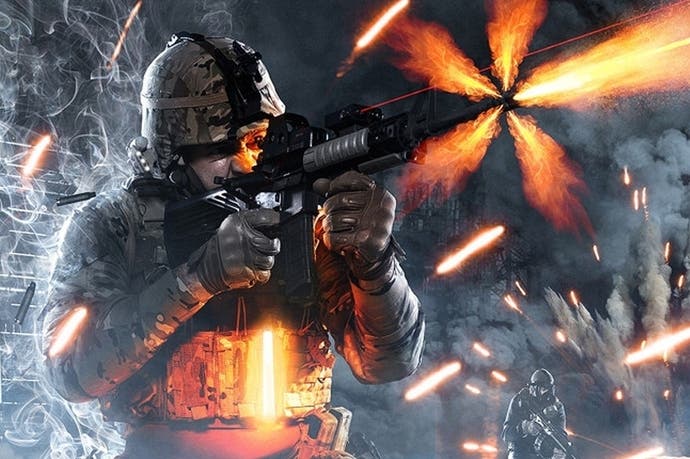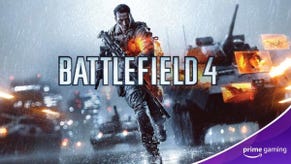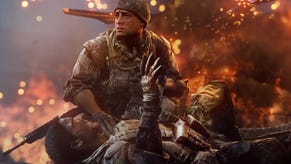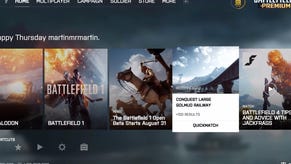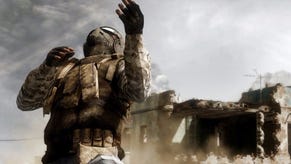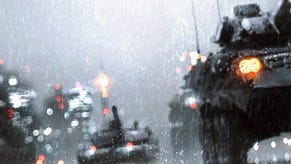Face-Off: Battlefield 4
Xbox 360, PS3 and PC under the microscope.
| Xbox 360 | PlayStation 3 | PC | |
|---|---|---|---|
| Disc Size | Disc One: 6.6GB, Disc Two: 5.8GB | 10.1GB | 23.8GB |
| Install | 1.9GB (mandatory), 12.4GB (optional) | 1.9GB (mandatory) | 23.8GB |
| Surround Support | Dolby Digital | Dolby Digital, 7.1 LPCM, 5.1 LPCM | Set-up dependent |
Just what kind of graphical leap is the upcoming generation really bringing us? Of course, years lie ahead for studios to tap into the fullest potential of the PS4 and Xbox One, but right now, launch window titles like Battlefield 4 give us the clearest barometer of where technical progress is being made. A cutting edge shooter that presses the 360 and PS3 formats harder than most with sandbox-style maps and destruction physics, it's inevitable that the next generation versions deliver more than just resolution and frame-rate boosts. Indeed, the overhaul is remarkable at points, though DICE still plays to the older hardware's strengths to deliver impressive results.
To jump straight into the comparisons, we've put together a PS3/PC/Xbox 360 comparison gallery and the usual barrage of head-to-head videos, each clip highlighting different gains in visual fidelity between the generations. As always, both 360 and PS3 versions are patched up to the latest update (1.02) before we start - labelled as a multiplayer mode update that weighs in at 123MB on start-up, but we kick off with a current-gen vs. PC comparison, with the computer version representing the zenith of the next-gen experience.
Curiously, since we covered the game in its beta form, the 360's internal resolution has bumped up from 1280x688 to now match the PS3's value of 1280x704 (DICE's Johan Andersson tells us that the border issue was a bug). Borders are the cause for the minor vertical nip and tuck in either case, cropping the tops and bottoms by eight pixels, though it's barely noticeable in play. And as before, image quality is divided between the two due to the PS3 applying a form of MLAA across the image, while Microsoft's opts for the post-processing FXAA, blurring trees and thin details to a greater degree as a result, but reducing the pixel crawl on these elements evident on Sony's platform.
"Frame-rate differences aside, the current-gen campaign holds us fairly well compared to next-gen editions, but wide-open areas and multiplayer really suffer."
Alternative comparisons:
Coming from the next-gen versions of Battlefield 4, the changes to lighting, effects and textures are as momentous as you'd expect, with the PS3 and 360 paring back asset details in open areas especially to keep a steady frame-rate. For the Fishing in Baku opening stage - notable for showing one of the most open areas in the campaign - what we're left with are flat, clay-like textures with none of the bump-mapping or shading seen on the new hardware. Trees are axed, birds culled, distant skyscrapers removed, and flapping banners stripped. We also see dialled back object draw, making large areas appear sparser and brighter for the lack of ambient occlusion to small objects like rocks and grass - each popping in at a more noticeable range.
However, DICE has been careful to build the campaign's design on a foundation that works on every platform. This means that, past the impressive Baku opener, the central four missions of Battlefield 4's campaign largely hinge on linear corridor shoot-outs where the generational leap in quality is far less striking. Maze-like routes through battleships benefit from easily missed decorative extras on walls on PS4 and Xbox One, while the traditional comparison between 360 and PS3 reveals little to no difference in terms of assets or effects.
But even for strictly A-to-B missions, we see physics-based action is cut out of the loop entirely for current-gen platforms. In one rainy Singapore stage, a tank paves the way through a road gridlocked with cars by flattening everything under its treads, while your squad trails behind on foot. This is a moment in the next-gen versions where the Frostbite 3 engine-work is put to exciting use to overcome an obstacle, but clearly is a step too far for the current-gen releases, where the road is obstruction-free from the off.
There are areas that show some breadth, but these are short-lived and barely representative of the multiplayer experience towards which most players will be migrating. For the most part, the big differentiator is in effects, where PS3 and 360 remove object and full-screen motion blur of the next-gen versions, cut down on per-pixel lit particle effects, and also chop the ambient occlusion for good measure. God-rays make it into the final release, though these are purely of the baked-in variety, streaming in through pre-defined points in abandoned buildings and so on - rather than dynamically around players. Again, everything in this field has a commonality between Sony and Microsoft's older platforms - the only differences worth mentioning being a bizarre pixellation to the 360's skybox during a boat mission on the China level.

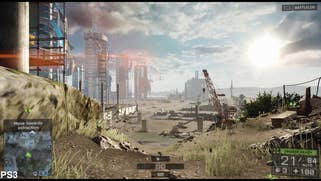






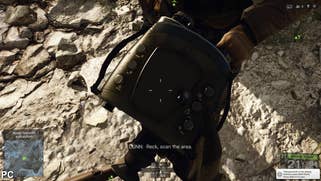

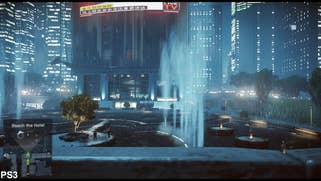
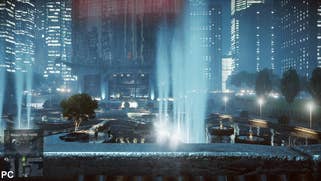
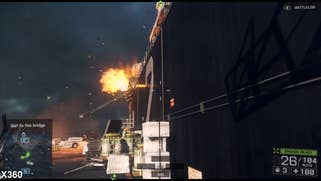

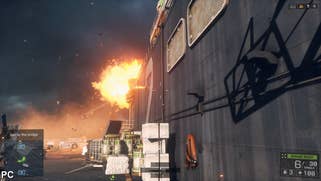
The 360 beta's texture streaming issues, that left some normal mapped details completely smudged by comparison to PS3, have gone too. In fact, the streaming of assets has a heavy bearing on the way the game looks and plays, with a 2GB mandatory install on each console, plus an optional install for each of the 360's discs coming recommended from EA itself. The end result is one with little noticeable pop-in where textures are concerned In campaign mode. However, massive multiplayer maps like Golmud Railway still need around ten seconds to load some assets in after the usual loading screen - an initial bump in an otherwise smooth ride.
Outside of the game's so-called "levolution" mechanic - allowing for levels to flood and skyscrapers to crash after being triggered by a script - Battlefield 4 also places a heavier emphasis on naval battling this time around. Wave physics now synchronise properly for all players online, allowing ships to bounce and dip, while still allowing the opponent to fairly pick their moment to fire at your relative position. Between the PS3 and PS4 versions, we see reflections across oceans are vastly upgraded, as is the refresh in the wave animations for the seas; the current-gen build's reflections updating less regularly by comparison to the fluid motion on PC and next-gen platforms.
Battlefield 4: current-gen performance analysis
Amongst the myriad visual drawbacks in the PS3 and 360 editions of Battlefield 4 compared to the succeeding next-gen versions, compromise was always a given in one area: performance. Right off the bat, we're missing the fluid motion of pure 60fps play on the newer consoles, but accepting this, DICE's target 30fps is reasonable if it can be held at a constant rate. Taking a look purely at the console versions available, we compare the game in like-for-like scenes and battle sequences - the context being that in previous Frostbite engine titles the 360 version has sometimes outperformed the PS3 by narrow margins.
"The big difference between Xbox 360 and PlayStation 3 comes down to screen-tear - none on the Sony platform but we see some genuine issues on its sibling."
The first coup d'etat for Sony's platform is the absence of any tearing, which afflicts the 360 version almost permanently while in outdoors areas. V-sync is very much in effect, but the surprise here is that this comes at no penalty for the system in the frame-rate stakes. Engine optimisation for Sony's Cell CPU's satellite processors has improved greatly since the series' early Bad Company days on consoles, and we now see the PS3 holding around a small 2fps advantage where both platforms are strained - such as scripted explosions in an early Baku fight. Elsewhere, the 30fps goal is largely hit in the campaign mode due to the insistence on aggressive level-of-detail scaling while outside - plus its inherent linearity while indoors.
But what of the multiplayer side of the equation? Again, we're pleased to find 30fps is mostly a constant on both platforms, save for the inevitable drop on explosions around destructible elements. However, the cutbacks needed to make this frame-rate possible for online play are more impactful than single-player, and damage the flow of play. For starters, large-scale conquest games - such as the island-hopping on Paracel Storm in Conquest mode - feel barren, and even maxed out at 24 players we spend more time scouting for the opposition than actually engaging in battle. This is widely considered the default mode for Battlefield, but after spending much time with the PC and next-gen versions, it's clear these stages are designed to be saturated by up to 64 players to keep the action flowing. A player cap at 24 on current-gen platforms, at best, is still scraping the barrel.
However, smaller Team Deathmatch mode variants of these maps prove much better suited to the lowered PS3 and 360 player count, though this cuts out a crucial part of the series' character. The big sandbox jungles and hilly landscapes filled with destructible buildings are traded out bounded segments of the same levels with less vehicle action, sadly making it less distinguishable from other shooters on the market.
"The biggest issue with Battlefield 4 multiplayer is that the supported 24 players per game isn't a large enough number to fill the maps in select game modes."
Alternative analysis:
Battlefield 4 on current-gen consoles: the Digital Foundry verdict
After spending time with the PS4, PC and Xbox One versions, the current-gen versions have been very difficult to go back to. At its foundation, much of the campaign is engineered across all platforms to avoid pushing PS3 and 360 hardware too far with the series' trademark open-field, physics based action. Instead, while the confined level design isn't typical of what you'll see in multiplayer, the solo campaign's undemanding nature does have the advantage of giving PS4 and Xbox One the necessary headroom to push out 60 frames per second with nary a drop - while current consoles push out 30fps without too much fuss.
If we're to compare the PS3 and 360 versions, the broad parity in visuals means performance is the deciding factor, and Sony's platform has an edge here. Tearing is rife on 360, while the PS3 version runs at almost the same frame-rate or better in like-for-like scenarios. The only outstanding difference between the two comes down to your preference between MLAA and FXAA in terms of anti-aliasing treatment, with the latter on 360 faintly softening the image to achieve broader coverage. As far as DLC exclusivity dealings go, the Second Assault map pack - containing classic Battlefield 3 levels such as Caspian Border and Metro - is a day-one timed exclusive for Xbox One, with releases on all other platforms still to be determined.
But with the next-gen hype dominating our headlines this month, it is easy to overlook these versions and play the waiting game. At their core, these are still serviceable takes on Frostbite 3 gunplay, but with hefty 2GB installs apiece, scaled-down assets and cut-backs to the online player count from 64 to 24, it's hard to muster too much enthusiasm when more lavishly featured alternatives are on the horizon. Nevertheless, if you're a persistent console gamer, Electronic Arts' "buy now, upgrade later" program at least lets players retain all their online progress when picking up the equivalent game on PS4 or Xbox One. For those taking this route, there's quite an upgrade lying in wait as and when they choose to make the next-gen leap.
